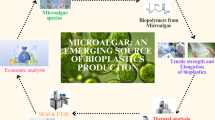Abstract
The utilization of waste tyre in a green way would definitely mitigate the possible risks of the waste tyre accumulation. A green way to solution for the waste tyre problem is recycling. However, it is necessary to optimize the recycling process parameters to come up with the optimum conditions for the effective reuse of the waste tyre. In this study, response surface methodology (RSM) was used to model and optimize the parameters of curing of EPDM and waste tyre composite for the purpose of waste tyre recycling. EPDM with different loadings of ground waste tyre composites were prepared. Mechanical, thermal, and Soxhlet extraction tests were carried out for the samples. RSM was applied and process parameters were optimized. It was seen that the most effective parameter was the curing temperature. The optimal values of the parameters were determined as curing temperature of 172.1 °C, curing pressure of 15.0 MPa and ground waste tyre content of 14.8% by weight. To test the parameters determined from optimization study, the samples were prepared under optimum conditions, and it was shown that the samples prepared according to the optimum conditions have better thermal, mechanical, and curing properties. The results were heartening to pursue the waste tyre recycling option with a considerable amount of ground waste tyre content within the final composite material.







Similar content being viewed by others
References
Drobny JG (2014) Thermoplastic elastomers prepared by dynamic vulcanization. Handb Thermoplast Elastomers. doi:10.1016/B978-0-323-22136-8.00006-5
Özdemir T, Güngör A, Reyhancan İA (2017) Flexible neutron shielding composite material of EPDM rubber with boron trioxide: mechanical, thermal investigations and neutron shielding tests. Radiat Phys Chem 131:7–12. doi:10.1016/j.radphyschem.2016.10.012
Ismail H, Awang M, Hazizan MA (2006) Effect of waste tire dust (WTD) size on the mechanical and morphological properties of polypropylene/waste tire dust (PP/WTD) Blends. Polym Plast Technol Eng 45:463–468. doi:10.1080/03602550600553739
Press A (2016) Spain evacuates 9000 from massive tire fire near Madrid | Daily Mail Online. In: Dly. Mail. http://www.dailymail.co.uk/wires/ap/article-3588494/Spanish-town-residents-ordered-indoors-tire-dump-blaze.html. Accessed 24 May 2016
Adhikari B, De D, Maiti S (2000) Reclamation and recycling of waste rubber. Prog Polym Sci 25:909–948. doi:10.1016/S0079-6700(00)00020-4
Ramarad S, Khalid M, Ratnam CT et al (2015) Waste tire rubber in polymer blends: a review on the evolution, properties and future. Prog Mater Sci 72:100–140. doi:10.1016/j.pmatsci.2015.02.004
Lopez-Manchado MA, Arroyo M, Herrero B, Biagiotti J (2003) Vulcanization kinetics of natural rubber-organoclay nanocomposites. J Appl Polym Sci 89:1–15. doi:10.1002/App.12082
Xu H, Li M, Wu F, Zhang J (2015) Optimization of Fenton oxidation process for treatment of hexogeon industrial wastewater using response surface methodology. Desalin Water Treat 55:77–85. doi:10.1080/19443994.2014.912962
Fukumori K, Matsushita M (2003) Material recycling technology of crosslinked rubber waste. R&D Rev Toyota CRDL 38:39–47
Yasin T, Khan S, Nho Y-C, Ahmad R (2012) Effect of polyfunctional monomers on properties of radiation crosslinked EPDM/waste tire dust blend. Radiat Phys Chem 81:421–425. doi:10.1016/j.radphyschem.2011.12.008
Mangaraj D (2002) Elastomer blends. Rubber Chem Technol 75:366–422
Cho IH, Zoh KD (2007) Photocatalytic degradation of azo dye (Reactive Red 120) in TiO2/UV system: optimization and modeling using a response surface methodology (RSM) based on the central composite design. Dye Pigment 75:533–543. doi:10.1016/j.dyepig.2006.06.041
Aleboyeh A, Daneshvar N, Kasiri MB (2008) Optimization of C.I. Acid Red 14 azo dye removal by electrocoagulation batch process with response surface methodology. Chem Eng Process Process Intensif 47:827–832. doi:10.1016/j.cep.2007.01.033
Körbahti BK, Taşyürek S (2015) Electrochemical oxidation of ampicillin antibiotic at boron-doped diamond electrodes and process optimization using response surface methodology. Environ Sci Pollut Res 22:3265–3278. doi:10.1007/s11356-014-3101-7
Formela K, Cysewska M, Korol J (2014) Effect of compounding conditions on static and dynamic mechanical properties of high density polyethylene/ground tire rubber blends. Int Polym Process 2:272–279
Da Costa HM, Ramos VD, Da Silva WS, Sirqueira AS (2010) Analysis and optimization of polypropylene (PP)/ethylene-propylene-diene monomer (EPDM)/scrap rubber tire (SRT) mixtures using RSM methodology. Polym Test 29:572–578. doi:10.1016/j.polymertesting.2010.04.003
Sirqueira AS, Soares BG (2007) The effect of functionalized ethylene propylene diene rubber (EPDM) on the kinetics of sulfur vulcanization of normal rubber/EPDM blends. Macromol Mater Eng 292:62–69. doi:10.1002/mame.200600332
Bellander M (1998) High pressure vulcanization. Vetenskap Och Konst, Stockholm
Halimatuddahliana IH (2009) The effect of dynamic vulcanization on the properties of polypropylene/ethylene-propylene diene terpolymer/natural rubber (PP/EPDM/NR) ternary blend. Polym Plast Technol Eng 48:34–41. doi:10.1080/03602550802539270
André M, Wriggers P (2005) Thermo-mechanical behaviour of rubber materials during vulcanization. Int J Solids Struct 42:4758–4778. doi:10.1016/j.ijsolstr.2005.01.015
Sreeja TD, Kutty SKN (2002) Studies on acrylonitrile butadiene rubber/reclaimed rubber blends. J Elastomers Plast 34:145–155. doi:10.1106/009524402024278
Sreeja TD, Kutty SKN (2003) Styrene butadiene rubber/reclaimed rubber blends. Int J Polym Mater 52:599–609. doi:10.1080/00914030304902
Roland MC (1989) Rubber mixture. Rubber Chem Technol 62:456
Özdemir T, Akbay IK, Uzun H, Reyhancan IA (2016) Neutron shielding of EPDM rubber with boric acid: mechanical, thermal properties and neutron absorption tests. Prog Nucl Energy 89:102–109. doi:10.1016/j.pnucene.2016.02.007
Gunasekaran S, Natarajan RK, Kala A (2007) FTIR spectra and mechanical strength analysis of some selected rubber derivatives. Spectrochim Acta Part A Mol Biomol Spectrosc 68:323–330. doi:10.1016/j.saa.2006.11.039
Orza R (2008) Investigation of peroxide crosslinking of EPDM rubber by solid-state NMR. Thesis, Eindhoven University of Technology
Sanches NB, Cassu SN, Diniz MF, de Dutra RCL (2014) Characterization of additives typically employed in EPDM formulations by using FT-IR of gaseous pyrolyzates. Polímeros Ciência e Tecnol 24:269–275. doi:10.4322/polimeros.2014.066
Author information
Authors and Affiliations
Corresponding author
Rights and permissions
About this article
Cite this article
Akbay, İ.K., Güngör, A. & Özdemir, T. Optimization of the vulcanization parameters for ethylene–propylene–diene termonomer (EPDM)/ground waste tyre composite using response surface methodology. Polym. Bull. 74, 5095–5109 (2017). https://doi.org/10.1007/s00289-017-2001-7
Received:
Revised:
Accepted:
Published:
Issue Date:
DOI: https://doi.org/10.1007/s00289-017-2001-7




